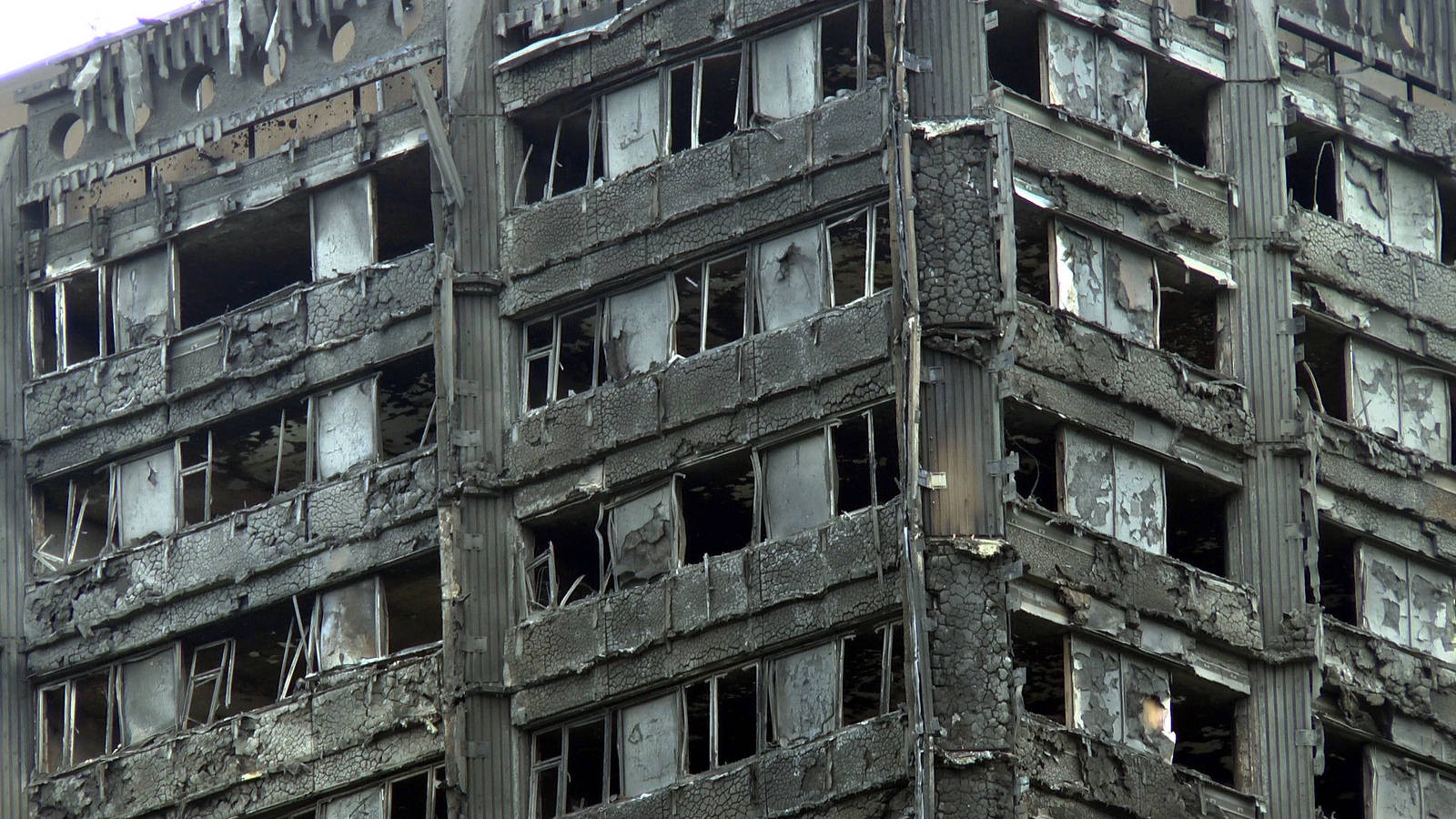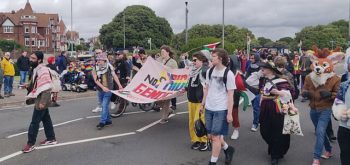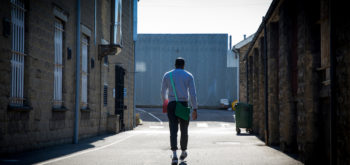Legal lacuna prevented Grenfell Tower residents taking action

Grenfell Tower, June 16, 2017. Pic: ChiralJon (Flickr, Creative Comms)
A gap in the law left the Grenfell Tower residents with no legal redress before disaster struck, housing law specialists have claimed. Seven months before the blaze at the 24-story tower block in North Kensington on Wednesday morning, which police fear may have killed as many as 100 people and injured scores, a blog post by the Grenfell Action Group foresaw the disaster.
The chillingly prescient post said:
‘It is a truly terrifying thought but the Grenfell Action Group firmly believe that only a catastrophic event will expose the ineptitude and incompetence of our landlord, the KCTMO, and bring an end to the dangerous living conditions and neglect of health and safety legislation that they inflict upon their tenants and leaseholders.
Unfortunately, the Grenfell Action Group have reached the conclusion that only an incident that results in serious loss of life of KCTMO residents will allow the external scrutiny to occur that will shine a light on the practices that characterise the malign governance of this non-functioning organisation.’
The building is managed by the Kensington and Chelsea Tenant Management Organisation (KCTMO) on behalf of the Borough of Kensington and Chelsea, and had recently undergone a £10m refurbishment.
While the cause of the fire is not yet known, residents had repeatedly raised concerns about the safety of the building.
Pilgrim Tucker, a west London resident who worked with the Grenfell Tower residents, told the BBC Two programme Newsnight: ‘These are ordinary residents. They are not the Camerons. They can’t afford lawyers. They tried to get lawyers, but because of the legal aid cuts, they couldn’t.’
But housing lawyers have claimed it is not the legal aid cuts that left residents unable to take action, but the law itself.
Sara Stephens, a housing partner at London firm Anthony Gold and member of the executive committee of the Housing Law Practitioners Association (HLPA), said: ‘There is a massive lacuna in housing law that leaves tenants with no pre-emptive remedy other than in cases of disrepair. There is a complete lack of civil remedy until something goes wrong, at which point tenants can take negligence claims.’
She said: ‘I am worried that this message is getting lost because people are understandably focusing on the absence of legal aid in housing cases.
‘I can’t see any way that legal aid could have helped in this case – there was nothing legally that the residents could have done, except start a private prosecution alleging a failure to comply with fire regulations, which would have been prohibitively expensive.’
The Landlord and Tennant Act 1985, section 11 enables residents to take action where a property has fallen into disrepair. But, said Stephens, the section is very narrow and only applies where buildings have deteriorated and are in a state of disrepair.
‘There should be some way for residents to be able to seek redress when a landlords fails to take action that is required,’ she said.
In 2015 Labour MP Karen Buck introduced a private members bill – The Homes (Fitness for Human Habitation) Bill – which would have required landlords to keep properties in a state fit for human habitation. It was talked out by Conservative MPs. But Stephens said that bill would not have helped the Grenfell Tower residents.
Simon Marciniak, HLPA chairman, said: ‘It appears incongruous for there be no pre-emptive remedy, but there was nothing the residents could have done until something went wrong’.
But David Foster, a housing community legal aid lawyer at London firm Foster & Foster, disagreed suggesting that media reports about the condition of the tower block indicate that a thorough surveyor’s report may have found actionable disrepair.
Alternatively, he suggested the residents may have been able to use the Human Rights Act, to make a damages claim for breach of article 2 (right to life) and 8 (right to respect for private and family life).
The real issue, added Stephens, is the fact that the recommendations of the inquest made following the blaze at Lakanal House in Camberwell in 2009, which killed six people, have not been implemented.
A statement on the website of the Borough of Kensington and Chelsea said: ‘We have heard a number of theories about the cause of the fire at Grenfell Tower. All of these will be thoroughly investigated as part of the formal investigation which has already begun’.
The prime minister has announced that there will be a full judge-lead public inquiry into the disaster, and the Labour leader, Jeremy Corbyn, called for legal aid to ensure those affected are legally represented and have their voices heard.
This article first appeared on the LegalVoice site (here)
INQUEST statement on Grenfell Tower
Meanwhile the legal charity INQUEST issued a statement saying that bereaved families, survivors and the public at large were ‘likely to be better served by a wide ranging judicial public inquiry’ rather than an inquest (here). See below for full statement:
We welcome the establishment of the criminal investigation to run in tandem with the independent judicial public inquiry into the Grenfell Tower fire. There are bereaved people and survivors and residents of tower blocks around the country with serious questions about how and why this disaster happened and who is responsible. Our thoughts and sympathies are with all those affected by this shocking tragedy. We are able to offer specialist advice and support to any bereaved people affected.
We are in no doubt that the interests of the bereaved families, survivors and the public at large are likely to be better served by a wide ranging judicial public inquiry rather than an inquest in a large scale disaster such as Grenfell House for the following reasons:
1. The scope of an inquest is necessarily constrained by its statutory purpose, i.e. to address who died, where they died, when they died and how they died, including the circumstances in which they died.
2. By contrast, the scope of a public inquiry can go much wider, with a broader discretion, greater powers and greater resources to address all relevant issues that arise, including the prevention of future deaths in similar circumstances.
3. Unlike an inquest, the terms of reference of a public inquiry can be designed to reflect the real imperatives arising out of the tragedy, including the most immediate one, to identify the steps that need to be taken urgently in relation to fire safety standards for other buildings of this nature. It can take place in phases over time: it can be required to provide a preliminary report on immediate matters of concern in a relatively short space of time, followed by phased sessions that are designed to meet the needs of families and survivors as well as the public.
4. At a public inquiry, families and survivors as well as other representatives of civil society (for example the Grenfell Action Group) should be entitled to recognition as core participants, with the benefit of public funding for legal representation and resources that are generally more generous than those available for families at an inquest. Only the families of the deceased may be entitled to recognition as properly interested persons at an inquest, and even then they are not guaranteed full legal representation or funding
5. Bereaved families have very similar rights of participation in an inquiry as they do at an inquest, and it is simply not correct to say that such families would not be able to ask questions of witnesses at a public inquiry. Indeed, not only bereaved families but also survivors and other recognised core participants may be permitted to question witnesses at a public inquiry, which cannot happen at an inquest.
6. The Coroner at an inquest into deaths in these circumstances has the discretion to summon a jury to hear and reach determinations upon all the evidence – there is no similar provision for a jury at a public inquiry, but instead the presiding judge may sit with a panel of advisors to produce an authoritative report to address all relevant issues, including recommendations arising from previous fire related deaths.
7. Finally, there can be both a public inquiry and an inquest, if for any reason the public inquiry does not deal with all issues of relevance to the purposes of an inquest: this has happened in some cases in the past (e.g Hillsborough, Zeebrugge, Ladbroke Grove rail crash).






